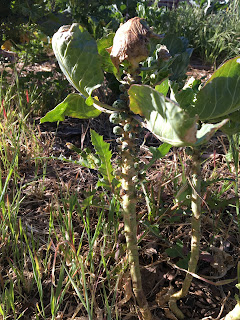A Matter of Selection Elizabeth Ilagan
1. Out of all the plants the leaves on the Brassica Oleracea give off the most variation in the greatest number of forms. The plants have shown that they all have grown at different paces and different heights to to the calculations I have gathered. At the beginning of the year, my group had started to grow cauliflower. All year long it has shown little to now growth. Recently, we had measured that the cauliflower is 1 inch compared to the kale which has a 6 inch length leaves and a cabbage that has 5 inch leaf with a 3 inch width. In the garden, the biggest variation would be the height of the different plants presented. This comparison is shown between the kale and the cabbage. We measured the cabbage being 9 inches in height and the kale shown to be 32 inches in height. This is significant because for plants that are related and can reproduce, also ave 23 inch differences, which is a large variation between one another.
2. The variation shown within the WGHS Gold Main Garden to the plants are growing because of multiple factors that changed the common ancestress over time to all of the different types of brassica we have. Different traits are passed down, but over time new ones occur and sometimes they are lost. This process is selective breeding and it leads to a large variety of plants. Another modification of a plants are the genes that are changed through a mutation. Mutations can either bring the plant to a disadvantage or bring it better advantages. But that trait will pass down to new plants later on, creating a new species of plant.
3. It is very obvious that the leaves in the plants are all different sizes. Although the leaves show a great variety of sizes, they all share some similarities. The similarities these plants share with their leaves would be having the same shape. Another things these leaves on the plants share are they are all green. The only color we really see in our garden is green, with the exception of the flowers, diet, and invertebre. Size may vary, but these brassica plants all carry out the same process.
4. They would have to breed with the desired plant continuously. Once they have their offspring twitch the wanted trait, then they would breed with that. One of the best ways to modify it is to force it to evolve by forcing it into a new environment. For example, throwing it in a place with no sunlight.


Comments
Post a Comment